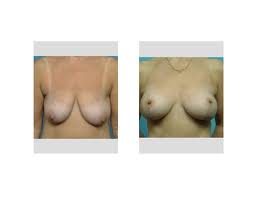Of the many women who present for consideration for a breast lift, the vast majority do not end up with a breast lift alone. While the various forms of breast lifting do successfully move the nipple position higher and tighten breast skin around it, it does not increase the size of the breast or in any way make it appear much fuller long-term. This is a surprise to most patients and, as a result, many breast lift patients opt to receive an implant as well.

What is the risk of the need for revisional surgery in a breast augmentation mastopexy? In the January 2013 issue of Plastic and Reconstructive Surgery that very question is addressed in a paper entitled ‘Simultaneous Augmentation/Mastopexy: A Retrospective 5-Year Review of 332 Consecutive cases. In this paper, the authors do a retrospective review of 430 breast lift patients, 332 of whom had implants placed at the same time. The breast operations were 40% inverted-T, 40% vertical and 20% circumareolar (donut) lifts. The breast implants used were 73% silicone and 27% saline-filled with 84% in a dual-plane submuscular pocket. This combined breast reshaping procedure had an overall complication rate of 23%. The most common reason for reoperation was capsular contracture, poor scarring and recurrent sagging.

Besides making the concurrent implant-lift operation work well on the operating table, there is the unknown and uncontrolled variables of the healing process. How much will the implants settle after surgery? Will the properties of one’s skin hold the lift up or will it bottom out? Will the scars stay narrow or widen? Will the breasts stay symmetric or settle unevenly? Will some degree of recurrent sagging occur over the implants? Will the nipple-areolar complex widen over time.
When you factor in all the before and after surgery considerations for doing the combined breast implant and lift operation, potential patients need to understand that the risk of revisional surgery is anything but rare. Even by well-experienced plastic surgeons, as in this study, the revision rate was 25%. I have always counseled these type of cosmetic breast patients that the risk was at least 33% and this study supports that contention.
Dr. Barry Eppley
Indianapolis, Indiana


